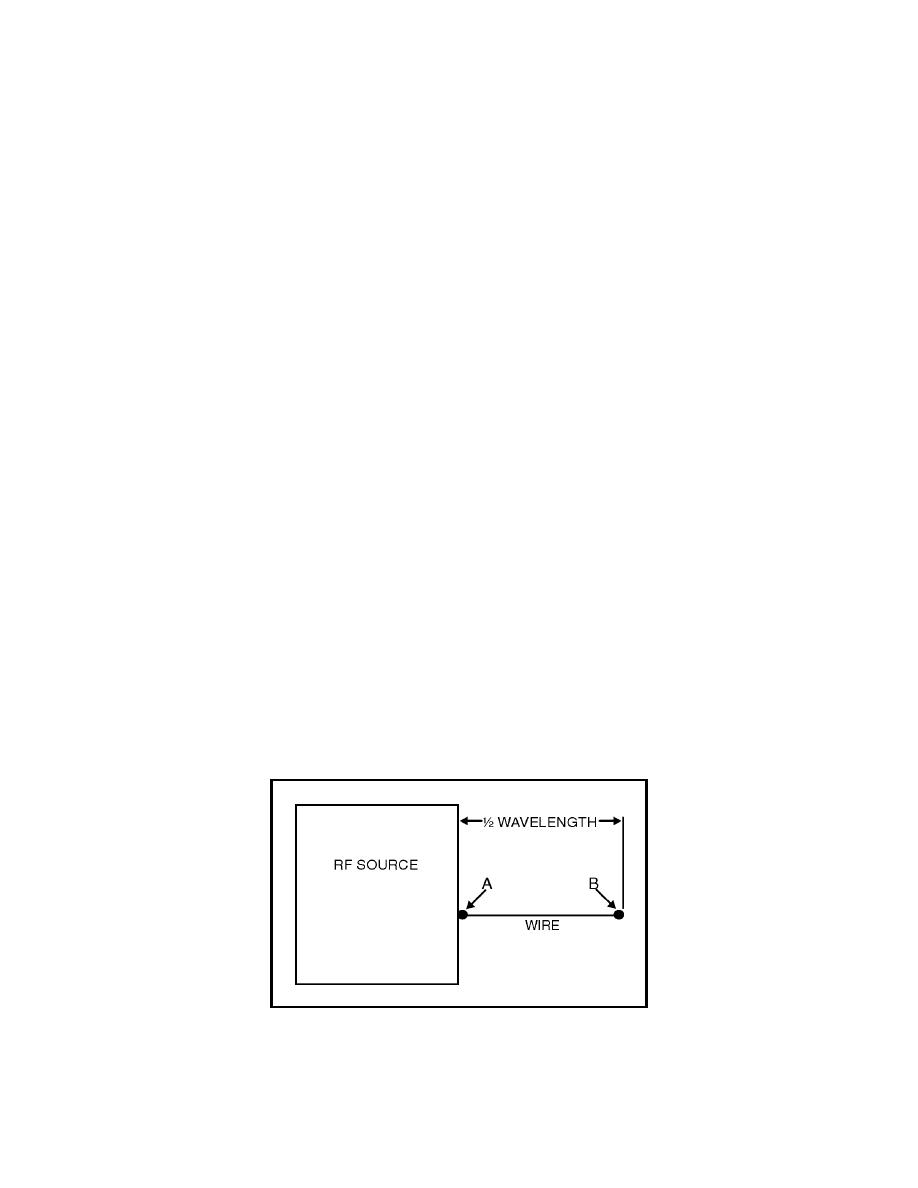
TC 9-64 _________________________________________________________________________
but a maximum number of electrons will be at the left end of the line and a
minimum number at the right end. The charge distribution along the wire
will vary as the voltage of the generator varies. Therefore, you may draw the
following conclusions:
A current flows in the antenna with an amplitude that varies with
the generator voltage.
A sinusoidal distribution of charge exists on the antenna. Every one-
half cycle, the charges reverse polarity.
The sinusoidal variation in charge magnitude lags the sinusoidal
variation in current by one-quarter cycle.
4-25. The electromagnetic radiation from an antenna is made up of two
components: the E field and the H field. These fields are discussed in
chapters 1 and 2. The two fields occur 90 degrees out of phase with each
other. These fields combine and produce a single electromagnetic field. The
total energy in the radiated wave remains constant in space except for some
absorption of energy by the earth. However, as the wave advances, the energy
spreads out over a greater area and, at any given point, decreases as the
distance increases.
4-26. Various factors in the antenna circuit affect the radiation of these
waves. In figure 4-6, for example, if an alternating current is applied at the A
end of the length of wire that stretches from A to B, the wave will travel
along the wire until it reaches the B end. Because the B end is free, an open
circuit exists and the wave cannot travel farther. This is a point of high
impedance. The wave bounces back (reflects) from this point of high
impedance and travels toward the starting point, where it is again reflected.
Through this back-and-forth motion (oscillation), the resistance of the wire
would gradually dissipate the energy of the wave; however, each time the
wave reaches the starting point, it is reinforced by an amount sufficient to
replace the energy lost. This results in continuous oscillations of energy along
the wire and a high voltage at the A end of the wire. These oscillations are
applied to the antenna at a rate equal to the frequency of the RF voltage.
Figure 4-6. Antenna and RF Source
4-8



 Previous Page
Previous Page
